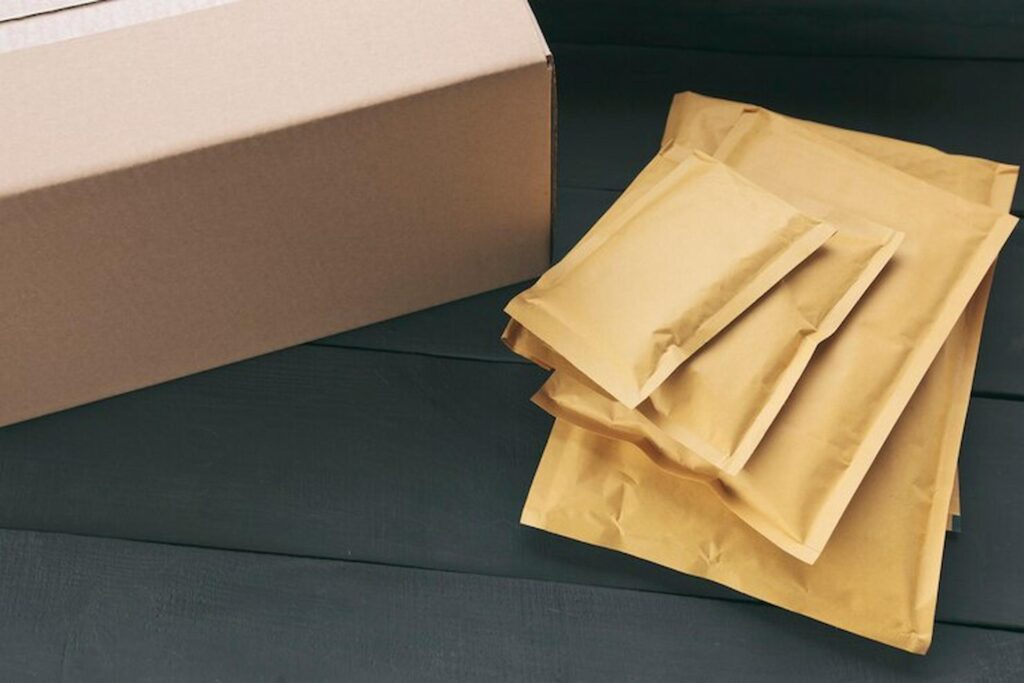Looking for eco-friendly options for custom mailing bags? Discover the top sustainable materials, their benefits, and how they can help reduce your environmental footprint while enhancing your brand’s image.
The world produces around 300 million tons of plastic waste each year, with a significant portion coming from packaging. This alarming figure highlights the urgent need for sustainable alternatives in packaging materials, including custom mailing bags. Businesses today face customer expectations for eco-friendly practices and share the responsibility of reducing environmental damage. Companies can balance functionality, brand appeal, and environmental impact by choosing sustainable materials for custom postage bags.
This article explores the most sustainable materials for custom mailing bags, their benefits, and why making the switch is essential for a greener future.
What Makes a Material Sustainable?
Before diving into specific materials, it’s crucial to understand what defines sustainability in packaging. A sustainable material should meet the following criteria:
- Eco-Friendly Sourcing: Derived from renewable or recycled sources.
- Biodegradability: Capable of breaking down naturally without harming the environment.
- Energy Efficiency: Produced with minimal energy consumption and reduced carbon emissions.
- Recyclability: This can be easily recycled into new products.
For custom mailing bags, achieving sustainability means selecting materials that meet these criteria without compromising durability or brand aesthetics.
Recycled Plastic: A Transition Solution
Recycled plastic is an excellent starting point for businesses wanting to reduce environmental harm without altogether abandoning plastic. Here’s why:
- Environmental Impact: Using recycled plastic reduces the demand for virgin plastic, cutting greenhouse gas emissions by approximately 30%.
- Durability: Recycled plastic retains the strength and flexibility needed for secure postage.
- Recyclability: Custom mailing bags made from recycled plastic can often be recycled again.
While not fully biodegradable, recycled plastic offers a practical solution for companies transitioning to more sustainable materials. Businesses can promote a circular economy by adding recycling instructions to their packaging.
Bioplastics: A Renewable Option
Bioplastics are derived from natural resources such as cornstarch, sugarcane, and algae. They are gaining popularity for their eco-friendly profile:
- Renewable Origins: Unlike petroleum-based plastics, bioplastics rely on abundant natural resources.
- Biodegradability: Many types of bioplastics can break down in composting conditions within six months.
- Brand Image: Using bioplastics reflects innovation and environmental commitment, enhancing brand reputation.
However, bioplastics may not be the ultimate solution. Their production still requires energy and water, and improper disposal can limit their environmental benefits. Businesses should pair bioplastic custom mailing bags with consumer education about proper composting.
Kraft Paper: Timeless and Eco-Friendly
Kraft paper has long been a favourite for sustainable packaging. Made from wood pulp, it offers several benefits:
- Biodegradability: Kraft paper decomposes in natural environments within weeks, leaving no toxic residues.
- Recyclability: Fully recyclable kraft paper can be turned into new products multiple times.
- Aesthetic Appeal: Its natural, rustic look aligns with eco-conscious branding trends.
Businesses can use reinforced kraft paper or combine it with water-based coatings to improve moisture resistance for added durability. Although kraft paper might not suit all shipping needs, it works perfectly for lightweight custom mailing bags.
Compostable Polymers: A Game-Changer in Packaging
Compostable polymers are engineered to break down in industrial or home composting environments. Key features include:
- Rapid Decomposition: Unlike traditional plastics, these materials degrade within 90–180 days under proper conditions.
- No Microplastics: Compostable polymers break down completely, eliminating the issue of microplastic pollution.
- Customisation: Available in various colours and designs, they cater to brands seeking unique custom mailing bags.
However, compostable polymers require proper waste management systems to fulfil their potential. Businesses can assist by clearly labelling the bags and partnering with local composting facilities.
Jute and Cotton: Natural Fibers for Eco-Conscious Brands
Jute and cotton are biodegradable and reusable, making them standout options for custom mailing bags:
- Sustainability: Both materials come from renewable plants and have low environmental footprints during production.
- Reusability: Jute and cotton bags are durable and reusable, aligning with the rising consumer preference for multi-purpose packaging.
- Aesthetic Customization: These materials can be branded with eco-friendly inks, offering a premium look for businesses targeting sustainability-minded customers.
One drawback is their higher cost compared to paper or bioplastics. However, their longevity and eco-credentials often justify the investment.
Advantages of Sustainable Custom Mailing Bags
Switching to sustainable materials offers several benefits:
- Environmental Preservation: Reducing pollution and conserving resources.
- Customer Appeal: 75% of consumers prefer eco-friendly packaging, which can boost brand loyalty.
- Compliance: Meeting packaging regulations and avoiding future bans on non-recyclable materials.
- Cost Efficiency: Although some materials have higher initial costs, reduced waste and recyclability can save money in the long term.
Challenges in Implementing Sustainable Packaging
Transitioning to sustainable custom mailing bags isn’t without challenges:
- Higher Costs: Materials like bioplastics and jute are more expensive upfront.
- Limited Infrastructure: Many regions need proper composting and recycling systems.
- Supply Chain Adaptation: Sourcing sustainable materials may require logistical changes.
Despite these hurdles, the long-term benefits outweigh the initial difficulties. Businesses can start small and gradually introduce sustainable options while educating consumers about their environmental efforts.
Tips for Choosing the Right Sustainable Material
When selecting the best material for custom mailing bags, consider the following:
- Product Needs: Assess your items’ weight, size, and fragility.
- Environmental Goals: Align materials with your sustainability targets, such as carbon reduction or biodegradability.
- Customer Demographics: Understand whether your audience values reusability or compostability.
- Certifications: Look for third-party certifications like FSC, PEFC, or ASTM for verified sustainability claims.
Future Trends in Sustainable Packaging
The sustainable packaging industry is evolving rapidly, with innovations such as:
- Seaweed-Based Films: Offering biodegradable, food-safe packaging solutions.
- Innovative Packaging: Embedding QR codes to guide customers on recycling or composting.
- Carbon-Neutral Manufacturing: Using renewable energy and offsetting emissions.
Investing in these emerging technologies ensures businesses stay competitive while supporting environmental progress.
Conclusion
Switching to sustainable materials for custom postage bags is not just a trend—it’s a necessity. Businesses can significantly reduce their environmental footprint while meeting consumer expectations by choosing options like recycled plastic, kraft paper, or compostable polymers. Though challenges exist, they can be addressed with informed decisions and gradual implementation. Every step toward sustainability, no matter how small, contributes to a greener future.


